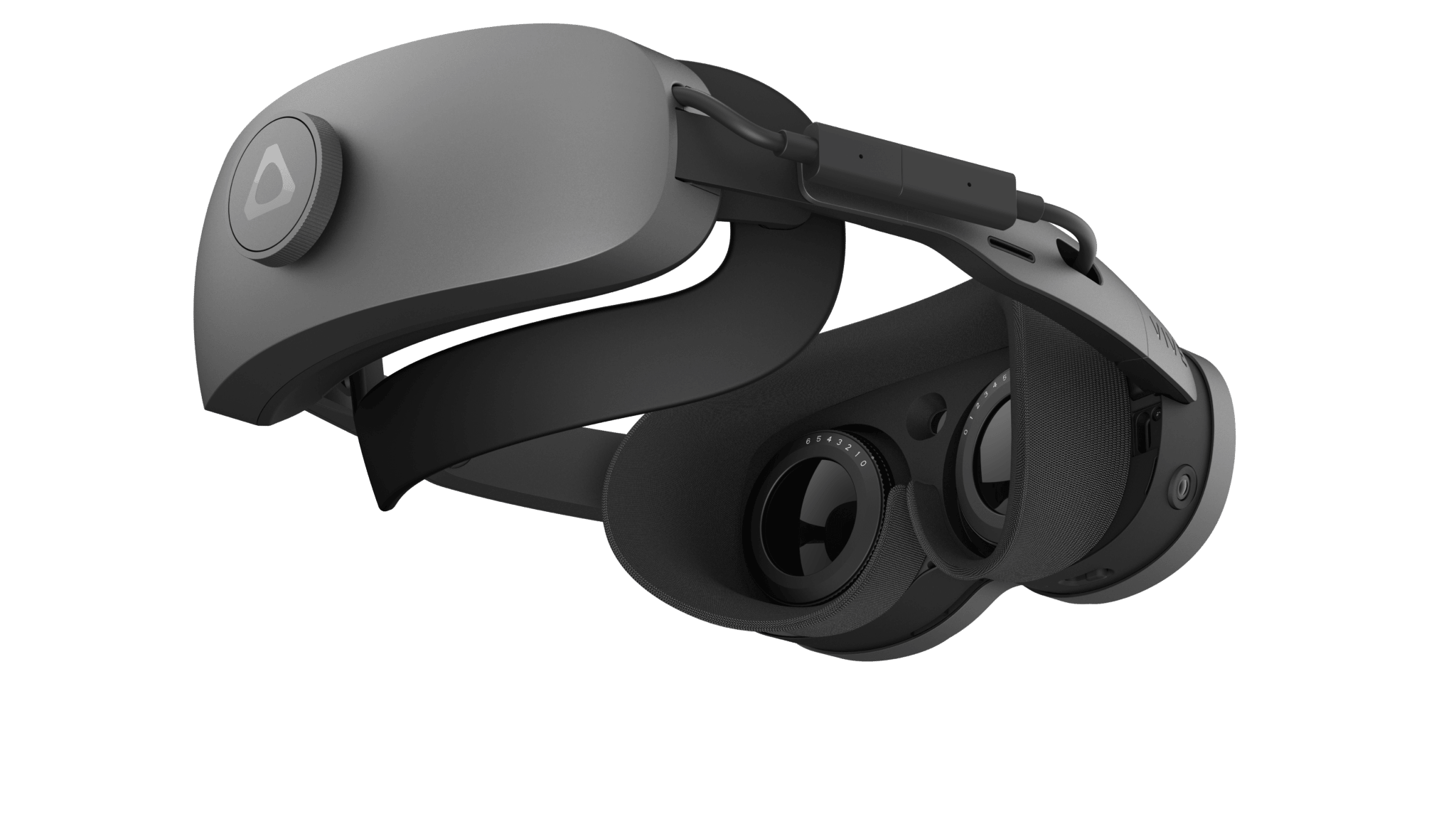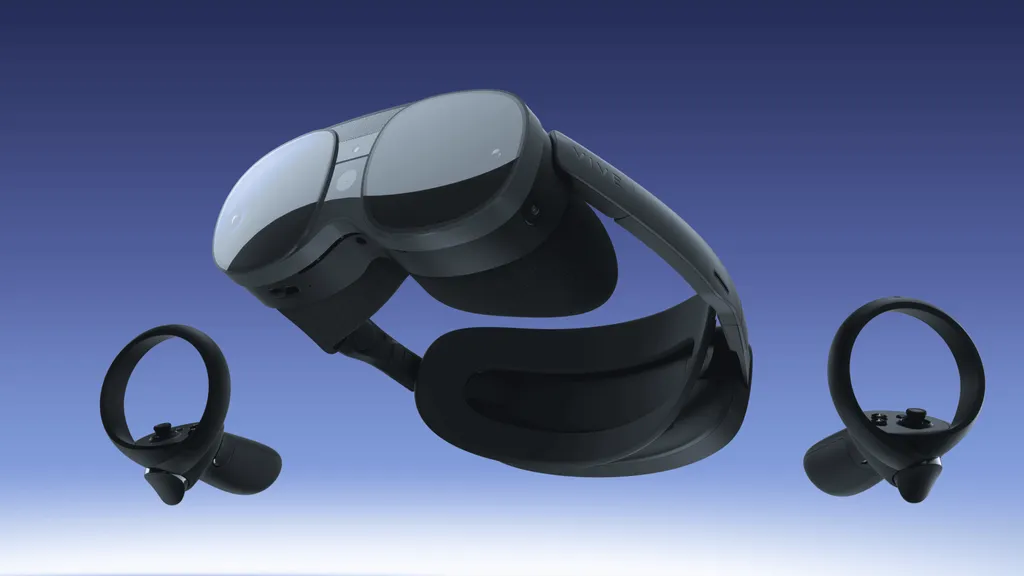HTC’s Quest Pro competitor is Vive XR Elite, shipping in February for $1100.
Vive XR Elite has a compact design achieved through the use of pancake lenses which look to be the same as Vive Flow’s from late 2021. It’s powered by the same Snapdragon XR2 Gen 1 processor seen in most other standalone headsets.
Like Quest Pro it supports mixed reality via color passthrough. But HTC pitches Vive XR Elite’s passthrough as noticeably superior, with higher resolution and dynamic range. UploadVR went hands-on with Vive XR Elite at CES 2022 and came away with the impression of much clearer mixed reality than Quest Pro. HTC claims it’s even good enough to read your laptop or phone screen without taking the headset off, but we’ll need more time testing to assess whether that’s truly usable. It also features a depth sensor (dropped from Quest Pro in the months before launch) to automatically mesh your room so virtual objects can collide with real objects.
Vive XR Elite comes with Quest 2 style tracked controllers, and also supports controller-free hand tracking.
 The dual LCD displays have a resolution of 1920×1920 each, slightly higher than Quest Pro, and a refresh rate of 90Hz. HTC is claiming an “up to 110 degree” field of view, but didn’t specify whether this is horizontal or diagonal. Flow’s field of view was narrower than most headsets.
The dual LCD displays have a resolution of 1920×1920 each, slightly higher than Quest Pro, and a refresh rate of 90Hz. HTC is claiming an “up to 110 degree” field of view, but didn’t specify whether this is horizontal or diagonal. Flow’s field of view was narrower than most headsets.
The lens separation is adjustable via a slider on the exterior of the headset for IPDs between 54-73mm, but there’s no built-in eye tracking so your IPD isn’t measured. The lenses also have diopter adjustment for people with impaired vision, so some glasses wearers won’t need to wear them.
An eye tracking and face tracking addon will be released later this year, but the price hasn’t yet been announced.
Vive XR Elite’s included battery is in the rear of the strap, but it can be detached so you can use any other USB power source, such as a battery pack, airliner/train seat, or wall adapter. This lets you lean back against a seat or sofa, something not possible with headsets like Quest Pro or Pico 4.
A unique feature of Vive XR Elite’s OS compared to Quest or Pico is you can stream the screen of compatible Android phones into VR, so you can view apps like Disney+ or play mobile games on a personal cinema screen.
From the built-in Viveport Store HTC lists a range of Quest ports coming in the “launch window” including Demeo, Unplugged, Green Hell VR, Les Mills Bodycombat, Figmin, Ancient Dungeon, The Last Clockwinder, Ultrawings 2, Gravity Sketch, Warplanes WW1 Fighters, RuinsMagus, Immersed, Tokyo Chronos, TRIPP, Puzzling Places, Crisis Brigade 2, and even Virtual Desktop.
Vive XR Elite is HTC’s first fully standalone headset for consumers. It promises superior mixed reality to Quest Pro in a more compact design for $400 less. But Quest Pro’s strength lies in its huge library of native content. Will HTC be able to attract enough developers to make its platform a truly viable alternative?
Preorders are available now from the HTC Vive website for shipping in “late February”.




























